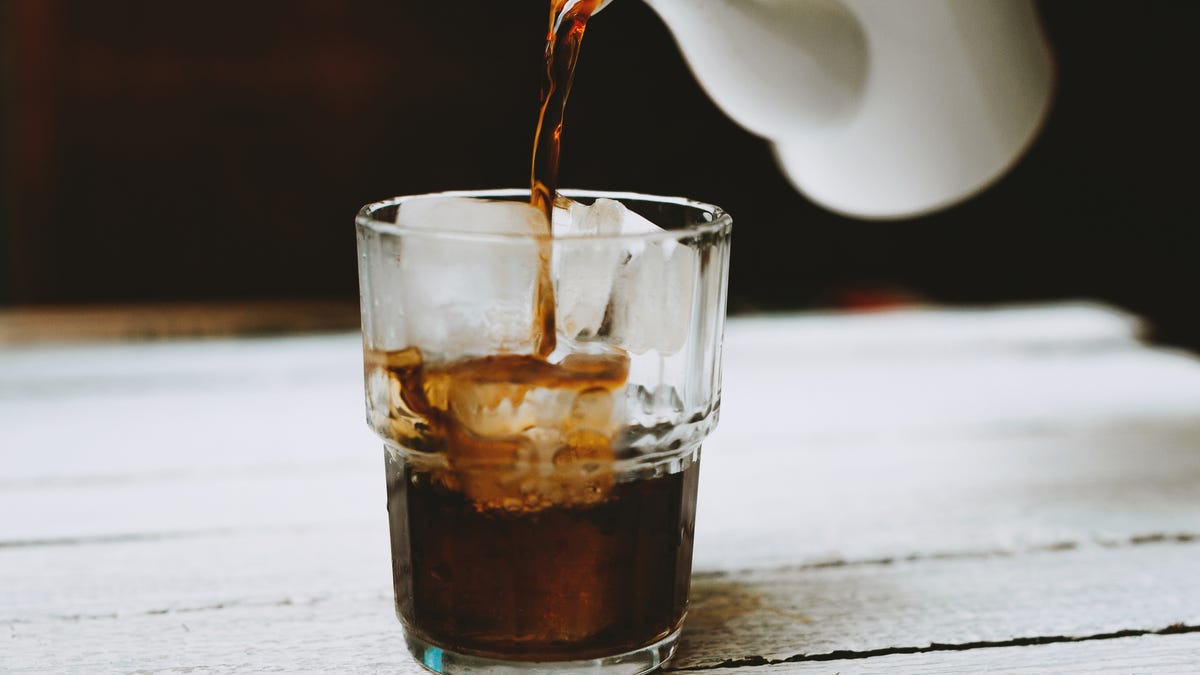
When temperatures spike, sipping an iced coffee is a great way to cool down while getting a caffeine fix. It’s easy to make chilled joe at home, but you’ll have to decide which method to use.
Two options have garnered a lot of followers: Cold brew, which is steeped in cold water overnight, and Japanese-style iced coffee, made by simply pouring hot coffee over ice cubs.
Cold brew
Despite its name, this beverage can either be brewed at room temperature or in the fridge. It’s typically made in concentrated form. That means its flavor won’t be diluted by extra ingredients like ice, milk, and chilled water.
The process calls for an approximate coffee grounds to water ratio of 1:4. Commonly used brewing containers include mason jars, a French press or a dedicated cold brew coffee maker. Brewing is complete after the coffee grounds have steeped for 12 to 24 hours. The last step is to filter the brew from the solid grounds.
The result is a super-strong liquid that’s sweet, silky smooth and with no hint of bitterness or acidity. If the thought is making you thirsty, check out our full guide on how to make your own cold brew.
Japanese-style iced coffee
This style of iced coffee sounds simple but it’s quite ingenious: You brew the coffee into a coffee pot or carafe full of ice.
you can add less increase the ratio of coffee to water to about 1:11. That’s more potent than the typical 1:16 ratio for drip coffee.
Besides not requiring the hours of steeping that cold brew does, ou will want to increase the ratio by one-third — or to approximately 1:11.
It helps kick the potency up a notch. compared with standard drip coffee, which is typically a
Hot blooming is a great way to get chilled coffee fast.
I like to use 70 grams (one-third cup) of ground coffee to 851 grams (3 1/2 cups) of water, a ratio of about 1:12.
The beauty here is the ice in my one-liter carafe offsets the stronger drip. In the end, you’re left with a well-balanced, flavorful and chilled beverage.
Japanese-style iced coffee brews up fast.
Speed
Cold brew coffee takes much longer to prepare, by far. The 12- to 24-hour brew time requires the kind of pre-planning that’s not for everyone.
In contrast, Japanese-style iced coffee brews in the same amount of time as regular drip coffee (5 to 8 minutes). That alone makes it the top choice for busy morning coffee drinkers.
Winner: Japanese-style iced coffee
Flavor
It comes down to personal preference. Many seek out cold brew for its unique sweetness and lack of acidity. The brewing method tends to conjure deep chocolate notes too, especially from darkly roasted beans.
If you’re a fan of light and medium coffee roasts then cold brew likely isn’t ideal. Coffee roasted this way often requires the brightness of acid to bring out its full flavor profile. And that can only happen during hot brewing.
Winner: Draw
Difficulty
Cold brew sounds easy to prepare. You just add coffee grounds to cold water and wait. No heat or special brewer is required. Even so, separating the brewed liquid from solid coffee grounds can be a pain. Unless you invest in a stand-alone cold brew gadget, straining grounds and cleaning up is often messy.
Straining solid coffee grounds is a necessary part of cold brew coffee.
Hot pour-over iced coffee, though, is almost as convenient as brewing regular drip. Just pour hot water over your grounds in a filter and you’re in business. You can even use an automatic coffee maker for the task. You will need to have plenty of ice on hand, but if you already own a competent ice maker that’s less of an issue.
Winner: Japanese-style iced coffee
The verdict
I’m certainly a huge fan of cold-brew coffee. I love it for its potency, sweetness and caffeine punch. Relying on cold brew as my go-to everyday summer morning jolt isn’t practical, though.
It’s hard to beat the immediate gratification of Japanese-style iced coffee. I can brew up a cold carafe in minutes. And tasting the full flavor of hot coffee in a chilled beverage, well that’s icing on the cake. I just hope my ice maker can keep up.
